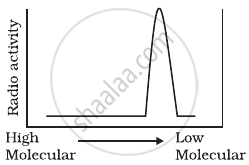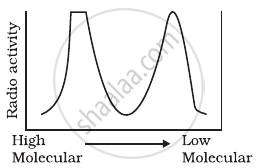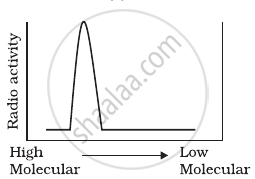Advertisements
Advertisements
प्रश्न
Replication was allowed to take place in the presence of radioactive deoxynucleotides precursors in E.coli that was a mutant for DNA ligase. Newly synthesised radioactive DNA was purified and strands were separated by denaturation. These were centrifuged using density gradient centrifugation. Which of the following would be a correct result?
विकल्प
उत्तर

Explanation:
Let us assume that heavier nitrogen was used in this experiment. This nitrogen molecule from parent's cell would be transmitted equally in the daughter cells. Each daughter cell will have half of the DNA with heavier nitrogen and another half with lighter nitrogen.
In the F2 generation, 50% of daughter cells will have a combination of radioactive and non-radioactive DNAs. The rest 50% of daughter cells will have non-radioactive DNAs.
This is the reason why the graph shows two peaks with each peak representing a particular form of nitrogen in DNA.
APPEARS IN
संबंधित प्रश्न
Sketch and label lytic cycle.
Give the types of blood proteins and human hormone’s produced by recombinant DNA-technique
The following diagram represents an important concept in the genetic implication of DNA. Identify A, B and C.

When DNA is transferred from a culture of capsulated Streptococcus to a culture of non-capsulated Streptococcus, converting the latter into the former type, the process is known as ____________.
Identify the component common to both DNA and RNA.
Which of the following results prominently proved that DNA is the transforming material from the experiments carried out by Avery, Macleod, and McCarty by using various enzymes?
Which one of the following is NOT a genetic material in bacteriophage?
To prove that DNA is the genetic material, which radioactive isotopes were used by Hershey and Chase (1952) in experiments?
RNA is the genetic material in ______.
Describe Frederick Griffith's experiment on Streptococcus pneumoniae.



